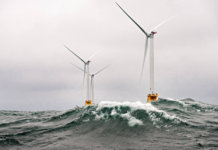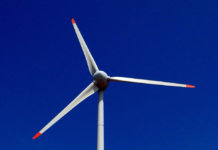The U.S. can dramatically lower the power industry's draw on the nation's strained water supply by replacing its aging power plants with water-smart options like renewable energy and efficiency, according to a new report.
The study, conducted by the Union of Concerned Scientists (UCS)-led Energy and Water in a Warming World Initiative (EW3), warns that continuing down a ‘business as usual’ path will place a heavy burden on the U.S.' water resources.
"In our water-constrained world, a 20-year delay in tackling the problem leaves the power industry unnecessarily vulnerable to drought and exacerbates competition with other water users," says John Rogers, co-manager of EW3. "We can bring water use down faster and further, but only by changing how we get our electricity."
According to the study, more than 40% of the U.S.' freshwater withdrawals are used for power plant cooling. These plants also lose several billion gallons of freshwater every day through evaporation. Furthermore, the report says increasing demand and drought are putting a greater strain on water resources.
Examining different paths the nation's electricity production can take in the coming decades, the study says that while utilities' ongoing shift to natural gas would decrease water use in the coming decades, its ongoing requirements could still harm water-strained areas.
However, according to the report, a pathway that includes strong investments in renewables and energy efficiency would greatly reduce power generation's water use and carbon emission.
Under such a scenario, water withdrawals would drop by 97% from current levels by 2050, with most of that drop within the next 20 years. The study says that approach would also cut carbon emissions 90% from current levels, mostly in the near term. A renewables path would also be a much cheaper path for consumers, the report adds.



